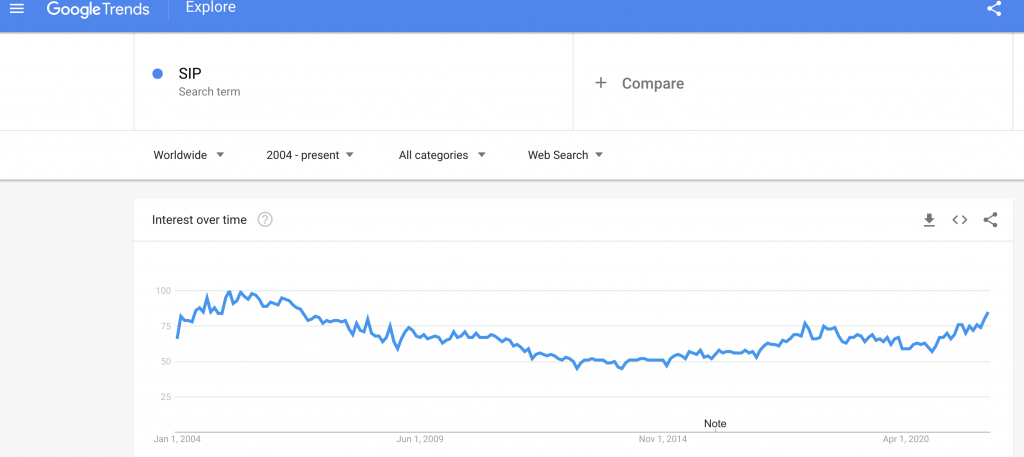Entrepreneurs and the SIP protocol
Savvy entrepreneurs have been taking advantage of the versatility SIP has to offer since the mid-'90s. We're excited to see more jump on board, it's a neat alternative to the closed VoIP ecosystem. (i.e. One VoIP company app for all devices, employees etc.)
For the less informed, SIP (Session Initiation Protocol) is a basic, classic, reliable, thoroughly tested avenue for phone calls (and other media) to travel through.
To say we like the technology would be an understatement. Users who send calls directly to a SIP URI are the most likely to experience consistently high-quality calls.
Network admins and medium-sized businesses continue to benefit from the technology while many entrepreneurs fall behind. We say "many" because we're seeing a trend where internet phone services are being offered without SIP. Some do offer SIP albeit not too prominently. New entrepreneurs are signing up for expensive services that lock them into certain apps (with lots of fluff to boot.) It should come as no surprise to some of you that most of these companies are built on SIP anyway.
With that being said, we understand the appeal. It's really simple to just download an app and be done with it. That's why we plan on offering this type of service in the future with current SIP functionality. Some of this falls under the category "what's the consumer is willing to pay" philosophy. While we don't want to undercut ourselves, passing savings to our customers is something we take pride in.
A lesson learned from the founder who worked in the family supermarket business in Queens, NY from the age of 5.
If you did a search on google for your business phone number needs you'd be hard-pressed to see a prominent SIP offering in the first 10 results. That's not to say SIP doesn't trend , it just seems to have drifted towards the more technically proficient.

Google trends chart on SIP
SIP is perfect for the entrepreneur
Everyone wants a phone number for their "Contact us" page. You may also need the phone number when signing up for services, think hosting and domain registration for example.
You buy a San Francisco number for $2.95 a month, set it to SIP ( unlimited incoming minutes ) using any device or software ( ie your smartphone). And then forget it. Move forward with your project.
If you need need to add more numbers, it won't break the bank. A London number will run you another $3 and if you add a number for the Australians you're under $10 a month for 3 legitimate local phone numbers.
Now for the cool part - Use SIP with a PBX-Phone system
Many entrepreneurs will still need some sort of phone system to manage calls. The phone system is an additional $13 (intro price) a month - on top of whatever the price of the phone number is.
For those who aren't aware, a PBX-Phone system is used to manage your call flow. There are many possibilities and suggest checking out our PBX page for more details
Where it gets interesting is how you're able to make and receive calls. In our system, this is called a "contact method"
A "contact method" could be any of the following:
-
A regular phone number (only for receiving calls)
-
3rd party SIP URI/ address
-
FlyNumber SIP account
If you send FlyNumber calls to a regular phone number or make outgoing calls, there is a low per min rate.
Other than that, receiving calls via SIP does not have a per min rate (unlimited incoming). That goes for both methods, to send calls to a SIP uri from another provider ( ie sip2sip), or if you use a FlyNumber SIP account created from within the phone system itself.
From a business perspective, SIP allows for much more flexibility. Probably in areas you never thought possible.
SIP really shines with hardware, devices like the Polycom and grandstream IP phones for example.
I happen to personally believe that working at a desk, with a desktop phone and notepad is still one of the best ways to get things done. We still love all the productivity tools out there, it's just that sometimes, especially when starting out - simple is best.
Then you have smartphones. Search for "SIP" in your app store/play store, you'll be sure to find an app for your device. Some of them are very customizable, one example is the groundwire app. You can do things like set phone number re-write rules when calling out. Another one is the ability to receive calls while the app is completely turned off. We also have users who use the app to differentiate calls from different FlyNumbers as well.
Using your own solution with SIP
This may be slightly over the head of some of you, still worth mentioning though - especially if your business plans on getting more and more calls as time passes.
Using the SIP protocol is still the go-to method for making and receiving calls with 3rd party VOIP / PBX software.
You have options like Asterisk, FreePBX, and Freeswitch. Either send the FlyNumber calls directly to the SIP URI where the software is installed or use the phone system to expand options.
For example, you may have a support team in an office using Asterisk but a sales team using smartphones. Use our phone system to add a menu, a caller will press 1 for support ( which will send them to the Asterisk ), and pressing 2 will send them to a queue that will ring your agents' smartphones' (that are set up with FlyNumber credentials)
In conclusion
Let's not forget what we're doing here.
Having conversations with other human beings...unless, of course, you reached a voicemail.